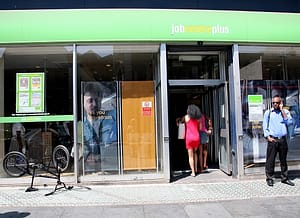Insolvency figures released yesterday* by the Government’s Insolvency Service show an almost 50% drop in insolvencies compared to February 2020.
The number of registered company insolvencies in February 2021 was 686, 49% lower than the number registered in the same month in the previous year (1,348 in February 2020). This is the lowest monthly number in this time series (since January 2019). December 2020 was the only month since the start of the first UK lockdown in which overall registered company insolvencies were higher than in the same month of the previous year.
In February 2021 there was a total of 686 registered company insolvencies, comprised of 591 CVLs, 33 compulsory liquidations, 56 administrations and 6 CVAs. There were no receivership appointments.
Leading restructuring and insolvency professional, Peter Hart from PKF GM said, “Company insolvencies continue to be far lower than the previous year in spite of an estimated 8% fall in GDP since the start of 2020. There’s no question that the measures introduced by the government to support and protect businesses over the last twelve months have had a huge impact.
“Whilst the Coronavirus Job Retention Scheme (or furlough) will now continue until the end of September, and many of the restrictions on enforcement action (moratoriums on winding up petitions and forfeiture) either have been or are widely expected to be extended at least into the summer, we still anticipate much more challenging trading conditions from summer onwards as these measures are withdrawn.”
Peter Hart added, “Many businesses have relied on the government’s support to survive Covid, but it won’t be long before this support begins to be withdrawn. In just the last week we have seen high profile businesses such as John Lewis and Thorntons taking tough decisions to give themselves the best chance to thrive in the post-pandemic economy.
2For those businesses who anticipate tough trading conditions when the economy reopens, these remaining few months before government support is withdrawn should be put to good use. Will revenues be high enough to support your cost base? Will cash flows be sufficient to deal with the additional debt burden (both formal and informal) that has accrued during lockdown?
“Now is a good time to begin negotiations with landlords and creditors to develop manageable repayment plans. Perhaps a CVA is something which should be considered or, where you may need to take the difficult decision to make redundancies to survive, consider applying for government funding to meet the short term cash impact of this.
“There are plenty of proactive actions you can take now to build resilience into your business for the post-Covid economy; don’t leave it too late. Having a restructuring professional guide you through the process can be invaluable in getting the best outcome and will also help you understand and mitigate your risk as a director.”






Leave a Comment